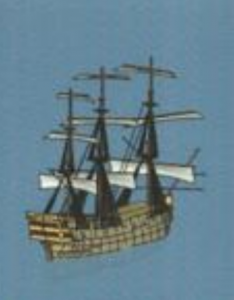The Honourable East Indian Company
Halsewell was built by John and William Wells, who between 1777 and 1792 launched 21 ships for charter by the HEIC.
The ship was built in 1778 using the keel of an older ship, the Earl of Ashburnham that had come to the end of its working life. This followed a tradition known as “Hereditary Bottoms” .
Introduction
The Halsewell was a member of the Honourable East Indian Company (HEIC) that was originally formed in London in 1599. The Lord Mayor of London sanctioned an association to carry trade to India, based on the success of the Dutch merchants and make England a place of importance for the importation of Indian and other Eastern products.
On 31 December 1600, her Majesty Queen Elizabeth I gave her assent to the granting of a charter, that granted a monopoly for trade between London and the East Indies. This would align the country with the profits acquired by the Portuguese and Spanish merchants. An example can be gleaned from their sixth voyage 1609-10 27.
This voyage was subscribed by entrepreneurs for £82,000, this a new ship named Trades Increase with a displacement tonnage of 1,100 tons was built in London, King James I launched it at Deptford. It dwarfed its predecessors, Peppercorn (342 tons) and Darling (150 tons), who were her companions on the voyage 28.
In the 18th century, rivalry between England and France for this lucrative trade and the control of India became apparent. This was resolved by Major General Robert Clive who defeated the French at Tamil Nadu in 1751 and Nawab of Bengal at Plassey in 1757. At this point, the Royal Navy controlled the seas, a large area of India was effectively ruled by the HEIC and their ships flew their own flag, seven horizontal red stripes on a white background, with the British Union flag in the top left-hand corner 28.
The Construction of Honourable Company Ship (HCS)
Halsewell was built in 1778 using the keel of an older ship, the Earl of Ashburnham that had come to the end of its working life. This followed a tradition known as “Hereditary Bottoms” the theory behind this was to salvage and recycle sound timbers; this was before the day of ultrasonic testing, then the Shipwrights would have hit the wood with a hammer and listen for change in sound of note returning. Her builders were John and William Wells, who between 1777 and 1792 launched 21 ships for charter by the HEIC 29
The Halsewell was a three masted ship with three decks. She was 776 tons, length 139 feet 7 inches and armed with 26 cannons 30, to fend off the French and Dutch navies and Privateers; an armed ship owned and officered by private individuals holding a government commission, that lurked on the high seas.
Halsewell was launched from Greenland Dock on 24 August 1778, where she was moved down to Deptford where her masts were erected, rigged with sails and two bough anchors installed. To complement her spares, spare masts, spars and rope were brought aboard, together with her guns and ammunition. In order to make her watertight her yards were blacked and tarred and her mast was scraped and coated with turpentine – in a process called payed. She was then provisioned with salted beef and pork, suet, bread, flour, cheese, dried fruit, oatmeal, cereals, red and white salmon fresh fruit, and of course alcoholic beverage ale, beer, wine, rum, cider, brandy and fresh water for the teetotaller and thirsty crew. In order to keep Scurvy at bay, lime or lemon juice, enough for the entire crew for the complete 35,000-mile journey, although, stocks would be replenished at ports of call on route 31
Fresh food comprised of a cow with calf, ducks, fowls, who were kept in coops, sheep and pigs all stored on a deck that resembled a farm yard. When this was completed, the ship had to be levelled by adding ballast known as “kentledge” so that she might sail on an even keel. The kentledge comprised of scrap iron or pigs of iron contained in wooden crates, also, redistributing cannons stored in the hold. This used a great deal of payload space and would have been reset after the goods were loaded at Gravesend 29.
The journey to the loading dock would require a Thames pilot to successfully negotiate the tidal currents, these pilots were licenced by Trinity House.
Trinity House an association founded in 1514 was responsible for licensing ships pilots and during Halsewell’s journey between Deptford and Ventnor, on the Isle of Wight, two pilots were deployed- Blackwall to Gravesend and Gravesend to the Isle of Wight 27.
Trinity House was also responsible for the construction and maintenance of buoys and lighthouses around the coast of England and Wales and was responsible for building Portland Bill Lighthouse.
At first, Trinity House opposed this building because of the cost, but the people of Weymouth continued their fight and on 26 May 1716 Trinity House obtained a patent from George I. Then a private consortium, obtained a 61-year lease and built two lighthouses with enclosed lanterns and coal fires, but sometimes they omitted to light the lamps. This was worse than no lighthouse.
